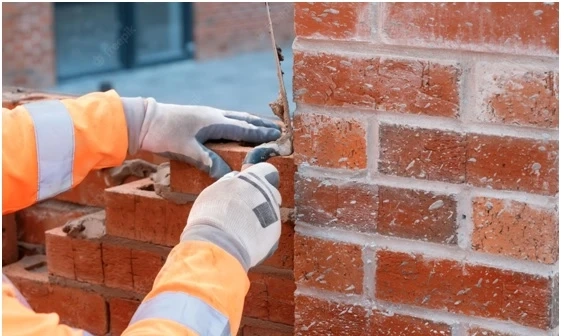Written By - Structural-india
Are you considering a major renovation or upgrade to your home or commercial building? One of the biggest decisions you'll have to make is whether to opt for structural retrofitting or demolition. While both options come with their own pros and cons, one factor that often comes into play is cost-effectiveness. In this blog post, we'll break down the costs associated with each option so that you can make an informed decision about which route to take. Keep reading to learn more structural RETROFIT consultants!
Structural Retrofitting
Structural retrofitting involves making upgrades or modifications to an existing structure, with the goal of improving its strength and durability. This can include things like adding additional support beams, reinforcing walls or floors, or even replacing outdated building materials with newer ones.
One of the biggest advantages of structural retrofitting is that it allows you to preserve much of the original structure while still making necessary improvements. This can be especially beneficial if you're working on a historic building or one with sentimental value.
Another advantage is that in many cases, retrofitting can be less expensive than demolition. While there are certainly costs associated with upgrading an existing structure, they may not be as high as tearing everything down and starting from scratch.
Of course, there are some downsides to consider as well. Depending on the extent of the retrofitting work needed, it could take longer than a simple demolition and rebuild project. Additionally, there may be limitations on what kind of changes you can make due to zoning laws or other regulations.
Structural retrofitting can be a smart investment for those looking to improve their property without completely starting over from scratch.
Demolition
Demolition is the process of tearing down a building or structure. It can be a necessary solution for buildings that are no longer safe to occupy, structurally unsound, or too costly to repair and retrofit.
Demolition requires heavy machinery and skilled operators who can carefully dismantle the building while minimizing damage to surrounding structures and the environment. The demolition process involves several steps, including site preparation, removing hazardous materials such as asbestos, salvaging reusable materials like metal and wood, demolishing the structure itself with large equipment like excavators and bulldozers, then finally clearing away any debris left behind.
While demolition may seem like an extreme measure compared to structural retrofitting, it can often be more cost-effective in certain situations where repairs would require extensive work or if a new building is needed altogether. Additionally, some older buildings may contain hazardous materials that make them unsafe for occupancy without extensive remediation efforts.
Demolition should only be considered when all other options have been exhausted. It's important for property owners to consult with experienced professionals before making any decisions about whether structural retrofitting or total demolition is the better choice for their specific situation.
Cost-Effectiveness
When it comes to deciding between structural retrofitting and demolition, cost-effectiveness plays a pivotal role. The expenses that come with both options can vary depending on numerous factors such as the size of the building or extent of damage.
Structural retrofitting involves making necessary repairs and alterations to an existing structure, which usually costs less than demolishing and rebuilding from scratch. By reinforcing the foundation, walls, and roof, you can extend the lifespan of your building without incurring significant expenses.
On the other hand, demolition is a costly undertaking that requires heavy machinery and labor. Moreover, there are additional disposal fees for waste materials generated during this process. However, if your building has extensive damage or does not meet current safety standards, then demolition may be more cost-effective in the long run.
It's also important to consider future costs when making this decision - while retrofitting may be cheaper now; if your building requires frequent maintenance or updates in years to come then it might end up costing more overall compared to demolishing and constructing a new one.
Determining which option is more cost-effective depends on various factors unique to each situation. It's crucial to weigh all available options carefully before coming up with an informed decision based on financial considerations as well as other relevant factors such as environmental impact or potential disruption caused by construction work.
Conclusion
After considering the benefits and drawbacks of both structural retrofitting and demolition, it's clear that each option has its own advantages depending on the specific circumstances of a project.
Structural retrofitting is generally more cost-effective than demolition for buildings that are still structurally sound but require updates to meet modern standards or adapt to changing needs. For instance, adding new seismic reinforcements to an existing structure can prevent costly damage from earthquakes without requiring a full-scale rebuild.
On the other hand, demolition may be necessary for buildings that have reached the end of their useful life or suffered extensive damage beyond repair. In these cases, starting fresh with a new building can often be more efficient and cost-effective in the long run than trying to salvage an old structure.
Whether you choose structural retrofitting or demolition will depend on factors such as your budget, timeline, building codes and regulations in your area. By working with experienced professionals who understand these factors intimately, you can make informed decisions about how best to approach your construction project.
When deciding between structural retrofitting versus demolition for your next construction project it is important consider all factors involved - including costs - before making any final decision. Weighing all pros and cons carefully will help ensure you make an informed choice that ultimately leads to positive results in the end!
Google Map - https://goo.gl/maps/tYPUHNsdzmcTeRDe9


